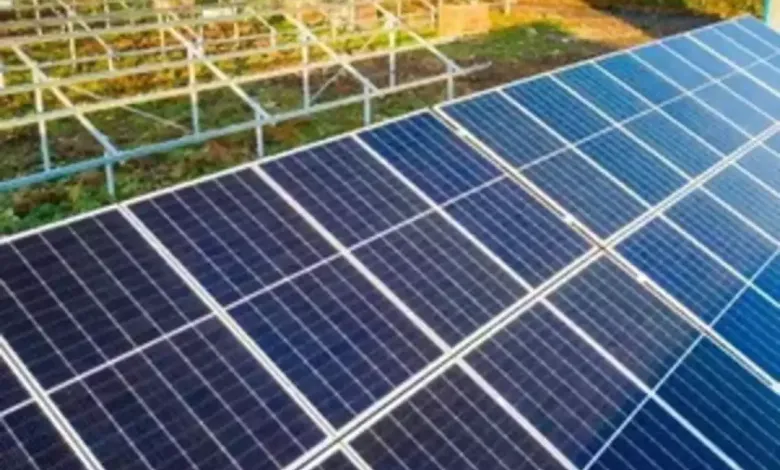
In Short : Exports of photovoltaic (PV) products have surged dramatically, even as global investments in solar energy continue to rise. This growth highlights the increasing global demand for solar panels and related technologies, driven by a shift toward renewable energy. Despite the ongoing expansion of solar infrastructure worldwide, the robust export performance underscores the sector’s scalability and its critical role in the global energy transition.
In Detail : India’s export of solar photovoltaic (PV) products soared 23 times between FY22 and FY24, when it touched $2 billion, and continues to grow at a scorching pace. The trend signals that the country is poised to be a net exporter of these products, even as it is eyeing big targets for solar capacity addition, and these products are meant to be in great demand locally.
According to industry sources, apart from the availability of a booming market in the US, robust growth in exports of PV items can also be attributed to temporary stagnation in domestic demand for PV modules owing to the delay in the implementation of the Approved List of Models and Manufacturers for the local markets. Most PV manufacturers have ended up looking to sell their products at a high premium abroad.
The US has emerged as a key market for Indian solar PV products accounting for 97% of shipments in both FY23 and FY24.
But the short-term focus on exports while leaving the domestic market high and dry, also may have some benefits, according to analysts. “Focussing on the US market can benefit the Indian PV manufacturing ecosystem. The exposure to the US market will enable Indian PV manufacturers to attain economies of scale, ultimately enhancing their product quality and competitiveness,” said Vibhuti Garg, Director-South Asia, Institute for Energy Economics and Financial Analysis (IEEFA).
However, she cautioned that to truly establish India as a global manufacturing hub for solar products in the long run, Indian PV manufacturers must focus on upstream backward integration. This will help India maintain its foothold in existing markets while unlocking untapped markets like Europe, Africa, Latin America, etc,” she said. With the US’s move to withdraw duty-free access to PV products from Southeast Asian countries, and even impose countervailing duties on them, India can potentially replace these countries to become the leading PV exporting country to the US, the Garg added.
The increasing demand for Indian PV products abroad and the attractive incentive structure under the Inflation Reduction Act (IRA) have also pushed many Indian manufacturers to establish manufacturing facilities overseas, particularly in the US. Some prominent players are Waaree Energies, Vikram Solar, Saatvik Energy, and Navitas Solar.
Waaree Energies is setting up a 5 GW per annum integrated PV cell and module manufacturing capacity in Texas, US. The first phase of 3 GW is expected to be commissioned by the end of 2024. Vikram Solar has also announced a 4 GW PV module manufacturing facility in Colorado, which will be commissioned by the end of 2024. Saatvik Energy, Navitas Solar, and Premier Energies have announced that they will set up three units of 1.5 GW, 1.2 GW and 1 GW of PV module manufacturing capacity in the US.
However, analysts also note that it is important for the country to balance the need of a growing export market with domestic availability given the government’s focus on increasing the share of renewable energy to 500 GW by 2030 and schemes like PM Suryaghar that mandate the use of domestic modules.
“During periods of domestic supply shortage, certain distributed renewable energy segments, such as residential rooftop solar, could be affected due to their smaller order sizes,” according to Jyoti Gulia, Founder, JMK Research. “This can make it difficult for developers to secure enough supplies to execute their projects. The supply-demand gap also affects solar module prices, which is a critical factor for the price-sensitive residential rooftop solar segment.”
As per the report, the country’s annual solar module production is likely to grow to 28 gigawatt (GW) in FY25 and 35 GW in FY26.
“After accounting for exports, the resultant supply by Indian PV manufacturers in the next two years will be only 21 GW and 25 GW, respectively, which is less than the requirement of approximately 30 GW per annum to meet India’s 2030 renewable energy target,” said Prabhakar Sharma, Senior Consultant, JMK Research.
Additionally, the country faces the risk of increased solar import bill in its attempt to achieve triple the renewable energy by 2030, according to a report by Global Trade Research Initiative.
India’s renewable energy ambitions could increase the country’s annual solar import bill to $30 billion from $7 billion currently with most of it coming from China, it said.
While initiatives like the Production Linked Incentive (PLI) scheme aim to boost local manufacturing, its impact is limited as it relies on imported inputs. Around 90% of solar manufacturing in India involves assembling solar modules from solar cells with 15% value addition. Very few Indian companies produce commercial scale solar cells from imported polysilicon or wafers that adds 30-40% value locally, as per the GTRI report.
“India is on the cusp of an energy transition revolution, with solar technology being a critical enabler. Ensuring that India meets its domestic demand while simultaneously establishing itself as a viable alternative to Chinese-origin PV products will contribute significantly to achieving the country’s renewable energy goals,” says Garg.













